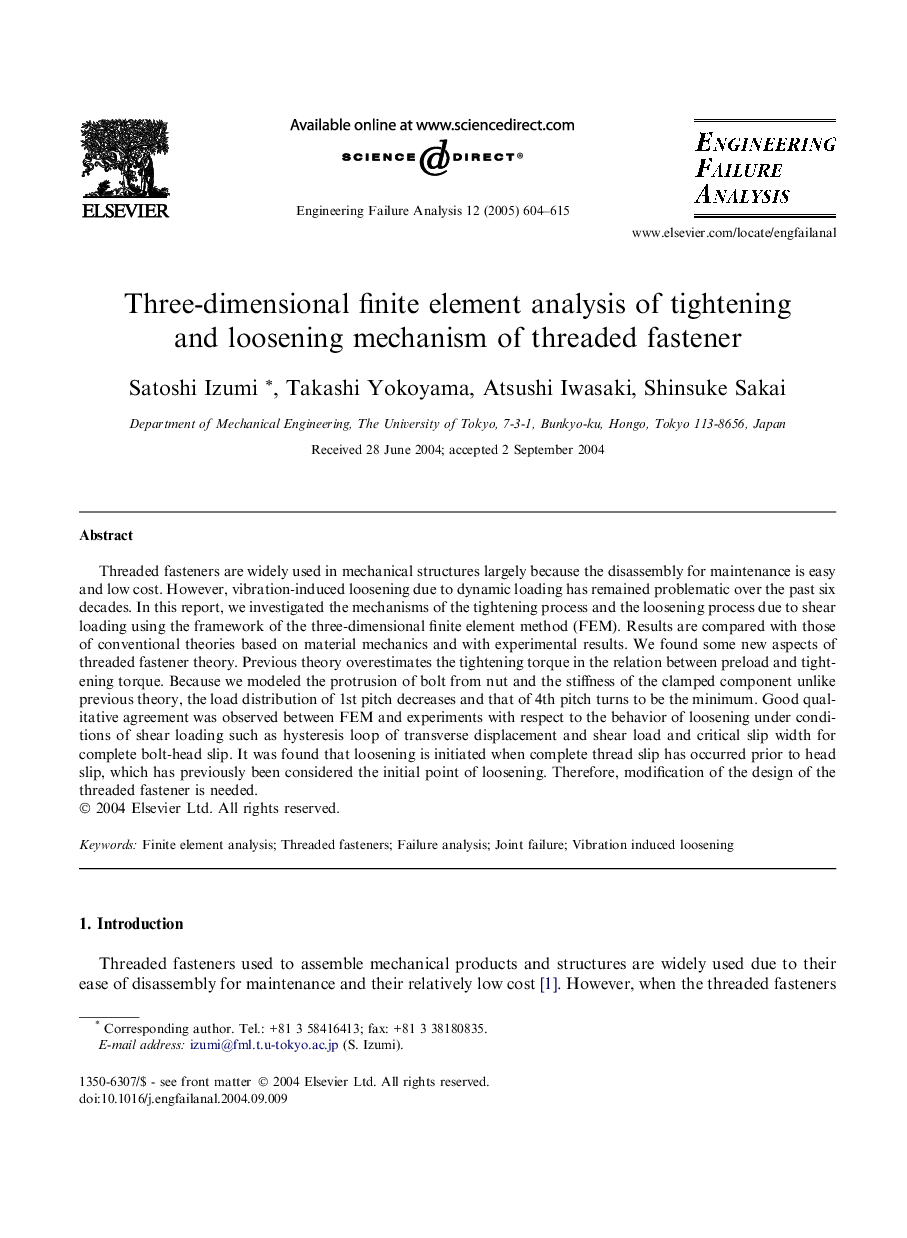| Article ID | Journal | Published Year | Pages | File Type |
|---|---|---|---|---|
| 10415302 | Engineering Failure Analysis | 2005 | 12 Pages |
Abstract
Threaded fasteners are widely used in mechanical structures largely because the disassembly for maintenance is easy and low cost. However, vibration-induced loosening due to dynamic loading has remained problematic over the past six decades. In this report, we investigated the mechanisms of the tightening process and the loosening process due to shear loading using the framework of the three-dimensional finite element method (FEM). Results are compared with those of conventional theories based on material mechanics and with experimental results. We found some new aspects of threaded fastener theory. Previous theory overestimates the tightening torque in the relation between preload and tightening torque. Because we modeled the protrusion of bolt from nut and the stiffness of the clamped component unlike previous theory, the load distribution of 1st pitch decreases and that of 4th pitch turns to be the minimum. Good qualitative agreement was observed between FEM and experiments with respect to the behavior of loosening under conditions of shear loading such as hysteresis loop of transverse displacement and shear load and critical slip width for complete bolt-head slip. It was found that loosening is initiated when complete thread slip has occurred prior to head slip, which has previously been considered the initial point of loosening. Therefore, modification of the design of the threaded fastener is needed.
Related Topics
Physical Sciences and Engineering
Engineering
Industrial and Manufacturing Engineering
Authors
Satoshi Izumi, Takashi Yokoyama, Atsushi Iwasaki, Shinsuke Sakai,
